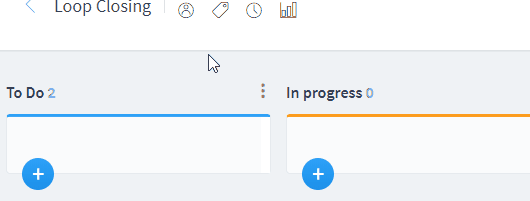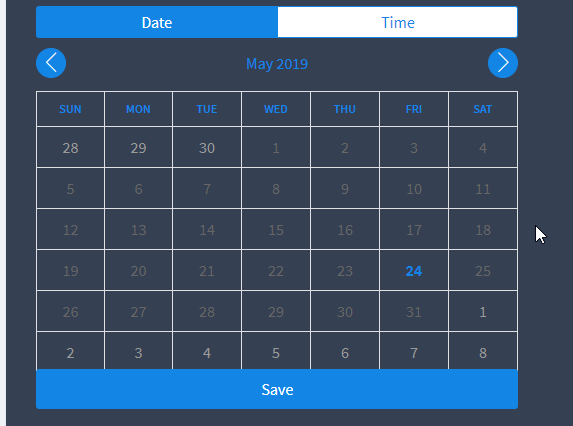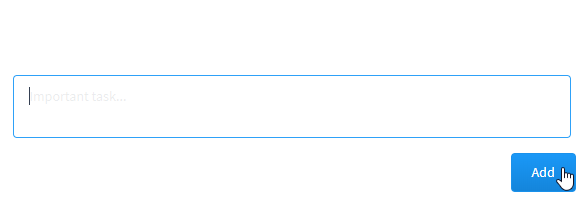Let’s make a guess – you’re one of those people who open more loops than they close. Finishing what you start is something you struggle with. You’re feeling frustrated because of that, aren’t you? You’ve got, after all, a head full of ideas and it would be wonderful to just put them all in motion.
And the process goes like that: you get excited about starting something new. You drop everything else you’ve been doing to focus on the new, game-changing project. You work, work, work, but what happens then?
You get another idea! Rinse and repeat.
Even if that’s not exactly your case, the truth is, many people struggle with open loops they don’t know how to close. Whether you’re jumping ideas or something takes you off the course, worry no more. Here’s our guide to finishing what you start every time.
It Starts With Knowing What’s Up
How do you want to close all these loops if you don’t have a clear idea of what’s open? If you’re a loop-opener recidivist, then you’ve probably got quite a lot on your “pending” list.
The first steps to close all the open loops is to write them down. Make a comprehensive list of your tasks. It doesn’t matter if they regard your professional projects, family or hobbies. You don’t want to leave anything out. Why? Because you’ll forget about it and leave the loop open.
So regardless of whether the given loop’s category, make sure there’s a note about it on your list. Only with a clear view of everything that’s pending, can you proceed to actually do something about it.
What Results Do You Want To Achieve?
Knowing what result you’re after is part of the loop closing process. When you’re setting out on a journey, you need to know your destination so you can follow the right route to it. It’s exactly the same with finishing what you start.
When you’re 100% sure what is that you want to achieve, you can prepare the right tools and plan your actions. But before that happens, take the list of things you’ve prepared. Note the desired result next to each of them.
Don’t skip this exercise. It’s vital, believe us. Describe the result in a tangible, practical way that is easy for you to visualize.
Finishing What You Start Is Impossible With Obstacles
Yes, the obstacles. They can either just make the travel hard, or become complete roadblocks.
Many of the open loops you’ve got “running in the background” are those which you opened without thinking about the obstacles. These can be different- time, finances, location, people, skills or knowledge. Do you often start a project without considering what can stop you from finishing it? If so, then you’re likely to fall off the track the moment you encounter the first issue.
So now, grab the list you’ve prepared and scan it again. Look at each open loop one by one and answer yourself: “What stops me from closing it?”.
If you feel like you can overcome the obstacle by outsourcing what you lack, then doing so be your next step. But if you can’t – then you’ll probably have to discard the project altogether.
Read More: “I’m stuck!” – 4 Ways to Deal With a Productivity Block
Prioritize Your Loops
By now, you should have a full list of your open loops which includes the desired results and obstacles. When you discard what you cannot complete at the moment, you’ll be left with a list that you need to sort through… again.
What you’ll do now, is to name your priorities. What’s the most important thing you’ve got to do? You can work collectively on all your items or set priorities within different life and work categories.
And remember – if everything’s a priority, then nothing is.
You’ll want to first work on the top of your priority list and then move to the less important items.
Read More: Eisenhower Matrix – Your Time Management Hack
Go For A Number Of Three
Finishing what you start is such a problem for many people because they often get confused about what to do next.
The bigger the project is, the more intimidating it looks. And that can scare people. We know there are so many things to do that we don’t know where to start. We end up doing nothing. Or we hustle from one task to another without making any progress.
That is exactly why you want to introduce the rule of three steps. However big the project is, you will always want to specify the next three actionable steps to take. Be detailed about it. Even if the first or second step is small and obvious, it has to be on your “Next 3 Things To Do” list.
Once you complete these steps, come up with the next three. It is a very simple way to stay on track and keep moving forward without getting distracted.

Review And Update Often
The trick with closing the loop is to repeat the whole process over and over again while revising the progress often.
Got a new idea? Put it on the list. Then visualize the result. Consider the obstacles. Give it a priority. Describe the next three steps until you close the project.
Now, while it’s very simple, people fail to do that because they stop coming back to their lists. Whatever project planning software or method you use, finishing what you start is all about reflecting and revising.
Going back to your list and asking yourself “What have I done about X recently?” is the most basic action that ensures you don’t lose your goals from sight. Be honest with yourself. Update obstacles if new ones appeared. Change the priority if the closing the given loop became more or less important.
You should do it daily, but a weekly review of your goals and open loops will work fine as well. It’s only important that you do it in regular, not too long intervals. It’s never set and forget. It’s constant revising whether you’re moving forward and whether you’re moving fast enough.
Project Management Software Can Help You
Here comes the best part. There are tools that can make your loop closing easier.
Everything you’ll ever want to do counts as a project. So why not use a project management platform to make your plans finally happen?
You can do it in Taskeo. See this video about turning your goals into actionable projects or follow these steps below:
Create a project for all the loops you want to close

Create a task for every loop you left open – and make sure to list them all!

Add checkpoints – be specific about every single step you need to take or follow the rule of three
Assign deadlines to make sure you make it on time

Final Thoughts
Now then – it’s your turn. Grab a blank paper sheet or open a document editor. Start writing down your open loops. We’ve shown you our way to deal with them, so why not give it a try? Finishing what you start doesn’t have to be such a pain in your neck anymore – good luck!







